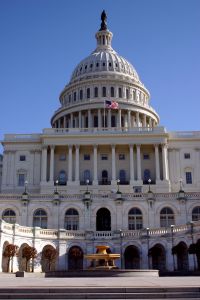 A premise of the Affordable Care Act (ACA) is to provide “affordable coverage” to more Americans with the idea being that newly insured individuals and families will have enhanced “access” to quality health care. Whitehouse Policy Snapshot. Particularly important is access to primary care, the means by which millions of Americans can obtain preventive care and better wellness as a way to avoid more expensive health care treatment in, for example, an emergency room. Following enactment of the ACA, there has been a strong push for previously uninsured Americans to obtain insurance via the new Health Insurance Market Place.
A premise of the Affordable Care Act (ACA) is to provide “affordable coverage” to more Americans with the idea being that newly insured individuals and families will have enhanced “access” to quality health care. Whitehouse Policy Snapshot. Particularly important is access to primary care, the means by which millions of Americans can obtain preventive care and better wellness as a way to avoid more expensive health care treatment in, for example, an emergency room. Following enactment of the ACA, there has been a strong push for previously uninsured Americans to obtain insurance via the new Health Insurance Market Place.
Atlanta and Augusta, Georgia Health Care Law Firm
That push appears to have succeeded to some extent. According to the White House, by virtue of the ACA, 8 million people have signed up for private insurance in the new Health Insurance Market Place, 3 million young adults have been able to stay on their parents’ health plan, and 3 million more people were enrolled in Medicaid and CHIP (as of February 2014) compared to before the Health Insurance Market Place opened. See FACT SHEET: Affordable Care Act by the Numbers. But being “covered” under insurance may not always equate to real access – or timely access — to health care. One reason for this reality is that as the numbers of enrolled insureds have increased under the ACA, the shortage of primary care physicians appears to have increased. According to Kaiser Health News (citing HRSA), about 20 percent of Americans now reside where there is an inadequate presence of primary care doctors to meet their health care needs. HRSA provides detailed demographic information demonstrating what areas/populations are medically underserved. Citing a report by the Association of American Medical Colleges, KHN reports that absent changes, there will be a shortage of 45,000 primary care doctors in this Country by 2020. And many doctors are leaving primary care practice due to the strains of diminishing reimbursement rates and an overbearing regulatory environment in which they ply their trade. So, with millions of new insureds needing the promised access to primary care, and an insufficient number of primary care doctors to deliver the care, how will the promised heath care “access” be obtained?
Continue reading ›
 Little Health Law Blog
Little Health Law Blog


 The strain of health care reform and third-party-payer bureaucracy will likely continue to push physicians towards non-traditional business models for practicing medicine. This is especially true for non-specialists. As the trend of physicians to find viable practice model alternatives grows, it is widely expected that the number of direct pay and concierge physician practices will increase significantly.
The strain of health care reform and third-party-payer bureaucracy will likely continue to push physicians towards non-traditional business models for practicing medicine. This is especially true for non-specialists. As the trend of physicians to find viable practice model alternatives grows, it is widely expected that the number of direct pay and concierge physician practices will increase significantly.
 Controlling healthcare costs is essential to the economic security of the United States. Total healthcare spending in the U.S., already an astronomical $3 trillion dollars in 2013, is expected to grow almost 6% annually through 2022.1 Spiraling healthcare costs is an obvious problem on many levels, including the fact that, through Medicare, the federal government is the single largest purchaser of healthcare in our third party payer system. Total Medicare spending is expected to increase from $523 billion in 2010 to $932 billion by 2020.2
Controlling healthcare costs is essential to the economic security of the United States. Total healthcare spending in the U.S., already an astronomical $3 trillion dollars in 2013, is expected to grow almost 6% annually through 2022.1 Spiraling healthcare costs is an obvious problem on many levels, including the fact that, through Medicare, the federal government is the single largest purchaser of healthcare in our third party payer system. Total Medicare spending is expected to increase from $523 billion in 2010 to $932 billion by 2020.2 Medicare payments to community health centers are expected to increase by as much as $1.3 billion over the next five years, according to
Medicare payments to community health centers are expected to increase by as much as $1.3 billion over the next five years, according to  Shopping savvy largely derives from the discomfort of parting with money. If health insurance pays all (or most) of the bill for healthcare services, why should the patient care what the cost of the healthcare is, how such cost is calculated, or how cost might be reduced? But as a patient begins to spend money out-of-pocket for healthcare, his attention to cost and his interest in how cost is determined and what alternatives might save money quickly increase. When his money is spent, he tends to want to know more about his medical bills, what the details are and, ultimately, how price is calculated. Historically, how healthcare is priced has been all but impossible for consumers to ascertain. Now, there is a push in the healthcare industry toward greater pricing transparency, which may dovetail well with increasing financial responsibility placed upon patients for their healthcare costs. Many experts argue that greater price transparency will lead to more intelligent “shopping” by patients for their healthcare, which in turn may (at least theoretically) put downward pressure on healthcare costs.
Shopping savvy largely derives from the discomfort of parting with money. If health insurance pays all (or most) of the bill for healthcare services, why should the patient care what the cost of the healthcare is, how such cost is calculated, or how cost might be reduced? But as a patient begins to spend money out-of-pocket for healthcare, his attention to cost and his interest in how cost is determined and what alternatives might save money quickly increase. When his money is spent, he tends to want to know more about his medical bills, what the details are and, ultimately, how price is calculated. Historically, how healthcare is priced has been all but impossible for consumers to ascertain. Now, there is a push in the healthcare industry toward greater pricing transparency, which may dovetail well with increasing financial responsibility placed upon patients for their healthcare costs. Many experts argue that greater price transparency will lead to more intelligent “shopping” by patients for their healthcare, which in turn may (at least theoretically) put downward pressure on healthcare costs. House Republicans gained the support of 27 Democrats and passed
House Republicans gained the support of 27 Democrats and passed  The Affordable Care Act (ACA), widely known as “Obamacare,” will create new opportunities for primary care doctors (and some specialists) who weigh starting or converting to a direct primary care model. At first blush direct care medicine practices, also known as “concierge,” “boutique” and “retainer-based” practices, which charge patients a monthly or annual membership fee and tend to exclude (or limit) third party payer involvement (one of the strong points for pursuing the model), would seem limited as an opportunity by the ACA’s objective of getting everyone “insured.” But the opposite may prove to be the case. Actually, the ACA may drive a strong need for new concierge medicine doctors.
The Affordable Care Act (ACA), widely known as “Obamacare,” will create new opportunities for primary care doctors (and some specialists) who weigh starting or converting to a direct primary care model. At first blush direct care medicine practices, also known as “concierge,” “boutique” and “retainer-based” practices, which charge patients a monthly or annual membership fee and tend to exclude (or limit) third party payer involvement (one of the strong points for pursuing the model), would seem limited as an opportunity by the ACA’s objective of getting everyone “insured.” But the opposite may prove to be the case. Actually, the ACA may drive a strong need for new concierge medicine doctors. The price Americans will pay for Affordable Care Act (ACA) changes may include lost wages and job benefits due to the price tag of ACA compliance for employers. It may seem to many like a good and noble thing to require insurers to insure everyone irrespective of health conditions and the attending financial risks and costs the insurer must assume; to make all individuals buy health insurance, irrespective of whether they want or need it; and to force employers to provide what the government decides says is the right kind of health insurance to employees. But nothing is free or without consequence, especially sweeping legislation intended to overhaul healthcare. Unfortunately, while the ACA will undoubtedly benefit many Americans, the true costs of the ACA will prove unaffordable for many employers and likely result in lost wages and job benefits for many Americans.
The price Americans will pay for Affordable Care Act (ACA) changes may include lost wages and job benefits due to the price tag of ACA compliance for employers. It may seem to many like a good and noble thing to require insurers to insure everyone irrespective of health conditions and the attending financial risks and costs the insurer must assume; to make all individuals buy health insurance, irrespective of whether they want or need it; and to force employers to provide what the government decides says is the right kind of health insurance to employees. But nothing is free or without consequence, especially sweeping legislation intended to overhaul healthcare. Unfortunately, while the ACA will undoubtedly benefit many Americans, the true costs of the ACA will prove unaffordable for many employers and likely result in lost wages and job benefits for many Americans. Nationwide there is much consternation and debate about what sort of “healthcare reform” might cure our health care system’s many ills, its growing price tag in particular. Of course, there is no shortage of answers and opinions about possible solutions or improvements. To be sure, the issue is highly complex, so there is room for much concern and debate. But since quality of health care is indisputably better than ever, it is important to focus on what actually needs to be reformed. The health care itself is good – what needs to be reformed is how we pay for and how we reduce the need for health care.
Nationwide there is much consternation and debate about what sort of “healthcare reform” might cure our health care system’s many ills, its growing price tag in particular. Of course, there is no shortage of answers and opinions about possible solutions or improvements. To be sure, the issue is highly complex, so there is room for much concern and debate. But since quality of health care is indisputably better than ever, it is important to focus on what actually needs to be reformed. The health care itself is good – what needs to be reformed is how we pay for and how we reduce the need for health care.